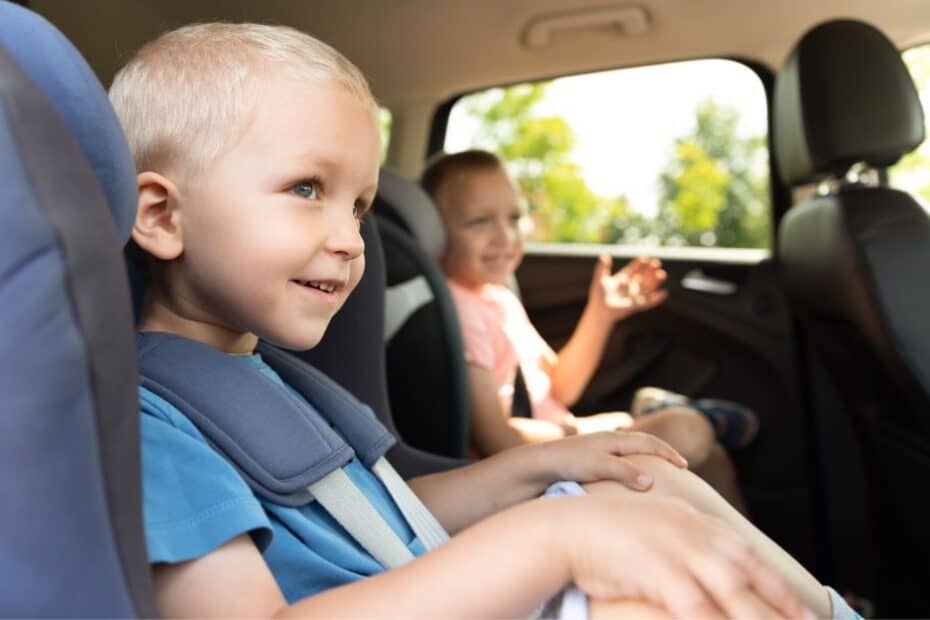Most of the time when we talk about making a compensation claim for a motor vehicle accident or an injury sustained in a public place, the information is clearly directed at adults. But children can also make compensation claims if they are injured in these accidents. Under the terms of NSW legislation such as the Civil Liability Act (‘CLA’) and Motor Accident Injuries Act (‘MAIA’), a person is not required to be 18 to make a compensation claim.
To be more specific, while a person under 18 does not possess the legal capacity to bring a claim for compensation, an adult ‘tutor’ – usually a parent or another close relative – may do so on their behalf. Whether the child has been involved in a car accident as a passenger, pedestrian or cyclist, or suffers an injury while playing at a park, a play centre, a school or childcare centre, or is a victim of medical negligence, a claim can potentially be made.
Depending on the severity of the accident, some injuries may cause long-term negative consequences for the child. As a result, compensation may be possible for pain and suffering; past and future medical expenses; past loss of income if working and under the age of 18 years; future loss of income depending on the severity of the injury; and the need for additional care.
Children may also be able to receive statutory benefits for reasonable and necessary medical treatment, as well as travel and accommodation expenses incurred by a parent or other carer of the injured child.
This article provides more detail on how children can make a claim for compensation under these Acts.
Claims brought under the Motor Accident Injuries Act 2017
For accidents that occurred after December 1, 2017, claims are governed by the Motor Accident Injuries Act 2017, which establishes NSW’s no-fault compensation scheme allowing injured individuals, including children, to seek compensation regardless of who was at fault in the accident.
It’s important for injuries to children to be thoroughly investigated, particularly as to their possible long-term impact on the life of the child. Sometimes this may mean the claim takes longer to bring and to resolve given the child is still physically developing and the impact of injuries may only manifest down the track.
Provided the injury is classified as more than a ‘minor’ injury, as defined by the Act, a minor’s common law claim for damages will generally be assessed and approved by a judge of the NSW District Court.
Other important timelines are the same for minors as for adults. The accident must be reported to the police within 28 days of the accident; a Personal Injury Claim Form must be lodged with the insurer of the at-fault driver within six months of the date of the accident; and the claim must be commenced within three years of the date of the accident.
Public liability claims under the Civil Liability Act
If a child is injured on private or public property and the injury was caused because the owner or occupier of the premises breached their duty of care, the child can bring a claim under the CLA – with a parent or carer standing in as the tutor.
It should be noted that the tutor is responsible for the costs of bringing a claim for compensation and can also be held liable for legal costs should the claim be unsuccessful. If the claim is settled through mediation or some other non-court process, it is required to be approved by the court before it becomes binding upon both parties.
In the more likely event that the child’s claim is successful, the damages proceeds will be placed in a trust until the child reaches 18 years of age, though in most cases can be accessed earlier to provide for the child’s educational needs or medical treatment.
Under the CLA, there are certain thresholds and restrictions on the amount of compensation that can be awarded for non-economic loss, similar as for adults. The CLA takes into account the severity of the injury, the impact on the child’s quality of life, and other relevant factors when determining the compensation amount.
As for adults, time limits apply for this type of claim, being three years from the date the cause of action is ‘discoverable’, or a long-stop provision of 12 years from the date of the accident – which can become relevant for children, as the seriousness of their injury and its impact on their life may only become apparent after a number of years. For reference, a cause of action is discoverable by a person on the first date the person knows or ought to know that the injury has occurred; that the injury was caused by the fault of the defendant; and that the injury was sufficiently serious to justify bringing an action.
Speak with our expert compensation team
In NSW, children injured in a public place or a motor vehicle accident are entitled to make a claim for compensation just like an adult. While the process is essentially the same, there are some special considerations for children, particularly around the assessment of injury and when to bring forward the claim. It’s important to speak with expert compensation lawyers at BPC Lawyers if your child has suffered an injury to properly understand the rights and options available for families.
